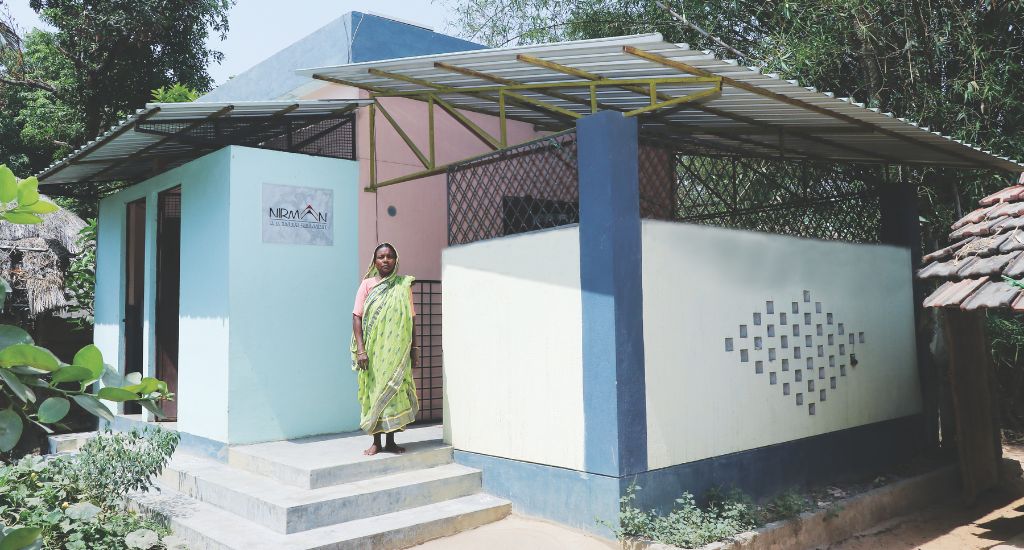
Rural India needs safe, climate-friendly resilient housing
As the demand for rural housing grows in India, there is an urgent need for safe, resilient housing which serves as a lifeline for families facing growing climate-related challenges.

As the demand for rural housing grows in India, there is an urgent need for safe, resilient housing which serves as a lifeline for families facing growing climate-related challenges.
In recent years, the link between climate change and housing has become increasingly evident, especially in rural communities bearing the brunt of environmental crises. Safe, resilient housing is now more essential than ever in these areas, where homes are more than just structures – they are lifelines for families facing growing climate-related challenges.
For instance, disaster-resilient homes built in Puri, Odisha, were constructed to absorb shocks and feature flood-resistant designs, allowing families to remain secure even in challenging conditions.

Through the Pradhan Mantri Awas Yojana, the Government of India is making substantial progress in meeting the demand for housing. In fact, India is one of the very few countries to have a structured national housing programme. However, many families at the bottom of the pyramid continue to face challenges in transforming their aspiration of a dream home into reality. With nearly 1.1 billion people worldwide living in slums and informal settlements, housing is a pivotal factor in building sustainable, equitable societies.
Goal 11 of the United Nations Sustainable Development Goals focuses on ‘making cities and human settlements inclusive, safe, resilient and sustainable’. Habitat for Humanity India’s work complements this global goal as well as the ‘Housing For All’ vision of the Government of India.
Many homes in rural and tribal areas are built using substandard materials, making them highly vulnerable to environmental shocks. As a result, these structures often fail to provide adequate shelter against extreme weather events like storms, floods, and heatwaves. Families who lose their homes in these disasters are further exposed to health risks, food insecurity, and displacement, all of which have profound social and economic consequences.
Moreover, according to the United Nations Environment Programme, nearly 40% of global energy-related greenhouse gas emissions are tied to buildings and construction. This is a significant concern in a country like India, where the demand for rural housing is expected to grow in the coming decades.

The challenge of building resilient, safe, and sustainable housing in rural India is not insurmountable. For example, using locally sourced materials not only reduces the carbon footprint of construction but also ensures that homes are better suited to local climatic conditions.
By promoting the use of local labour and materials, housing projects can also stimulate the local economy, providing employment opportunities and skills training for residents. Additionally, sustainable housing solutions that incorporate renewable energy sources like solar panels can help reduce environmental impact and long-term energy costs for families.
When homes are built to withstand extreme weather, families are less likely to be displaced, and communities are better able to recover and thrive after disasters.
Resilient housing also has a ripple effect on social and economic development in rural areas.
Secure homes enable families to focus on improving their livelihoods, whether through farming, entrepreneurship, or education. Further, homes that are built to last are less likely to require costly repairs or rebuilding in the wake of extreme weather events.
By incorporating the voices of local communities, housing projects can be tailored to meet the specific needs and preferences of the people they serve, ensuring that homes are culturally appropriate, sustainable, and cost-effective.
However, financial constraints are a significant barrier, as many rural families cannot afford to build or retrofit homes using sustainable materials. Moreover, the lack of awareness about climate-friendly construction practices often leads to the continued use of inefficient, non-durable materials.

To overcome these challenges, governments, private sector actors, NGOs, and local communities must work together to facilitate affordable, climate-resilient housing solutions that can be scaled across rural India. This includes providing financial support and incentives for families to adopt sustainable construction practices, as well as training programmes for local builders. Policymakers also have a critical role to play in fostering an enabling environment for sustainable housing development.
The future of rural housing in India lies in our ability to embrace innovation while honouring traditional wisdom. By investing in resilient housing, we can help rural communities weather the storms of today and build a stronger, more sustainable future for generations to come.
Driven by the vision that everyone needs a decent place to live, Habitat for Humanity began in 1976 as a grassroots effort and has since grown to become a leading global nonprofit working in more than 70 countries. In India since 1983, Habitat for Humanity has supported more than 38 million people by helping them build or improve a place they can call home, build improved sanitation units and provide humanitarian aid and disaster-resilient shelter solutions in the aftermath of natural disasters.
To learn more, donate or volunteer, visit www.habitatindia.org
Lead image on top shows Rubi Ruidas at her eco-friendly home that uses fly-ash bricks in Durgapur, West Bengal. (Photo courtesy of Habitat for Humanity India)
(Anand Kumar Bolimera is National Director, Habitat for Humanity India.)